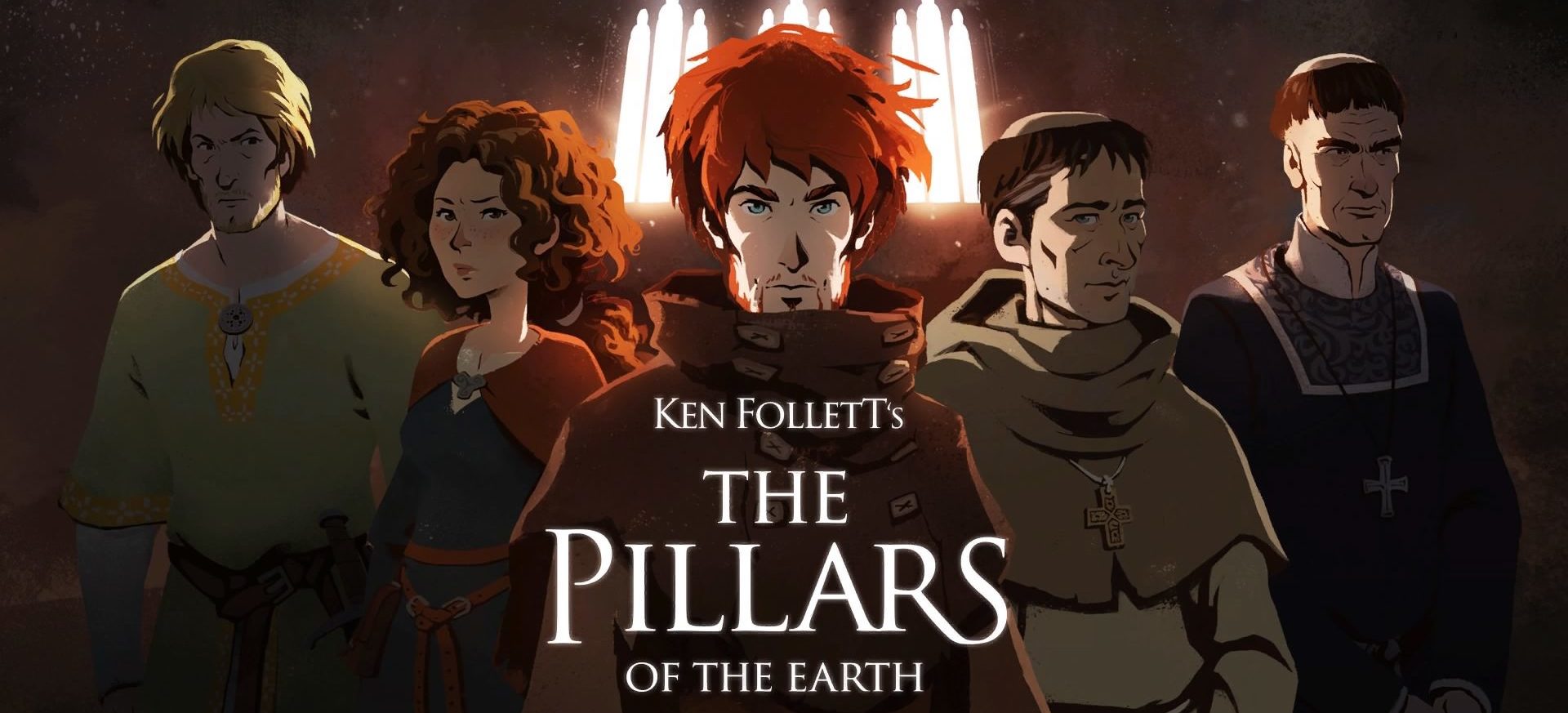
Review by Kyle Worrall
Edited by Katie Tarrant
Developer: Daedalic Entertainment
Publisher: Daedalic Entertainment
Lead Composer: Tilo Alpermann
Voiceover: Voice Squad
Reviewed on: Playstation 4
Introduction
Ken Follett’s The Pillars of the Earth (Volume Two: Sowing the Wind) is the second instalment of a point-and-click adventure game, based on a best-selling novel of the same name. Each section has been released separately, but comes as part of one game, and in this article we will mainly be discussing the second volume. Ken Follett’s The Pillars of the Earth as a gameplay experience doesn’t break the mould when it comes to point-and-click adventure games; using mainly a combination of mini-games, exploration, and item-based puzzle solving. However, as well as developing upon the narrative in meaningful and enjoyable ways, it also changes up the gameplay in small ways with the addition of a new way to travel across town maps to add variety to the experience.
Considering this is an interactive adaptation of a book, I didn’t expect it to break any standard conventions, nor did I expect to find it as enjoyable or engrossing as I did with Grim Fandango. I also did not expect this style of gameplay to mix so well with an art style the likes of that used in The Banner Saga games. But on all counts, I was pleasantly surprised, and here’s why.
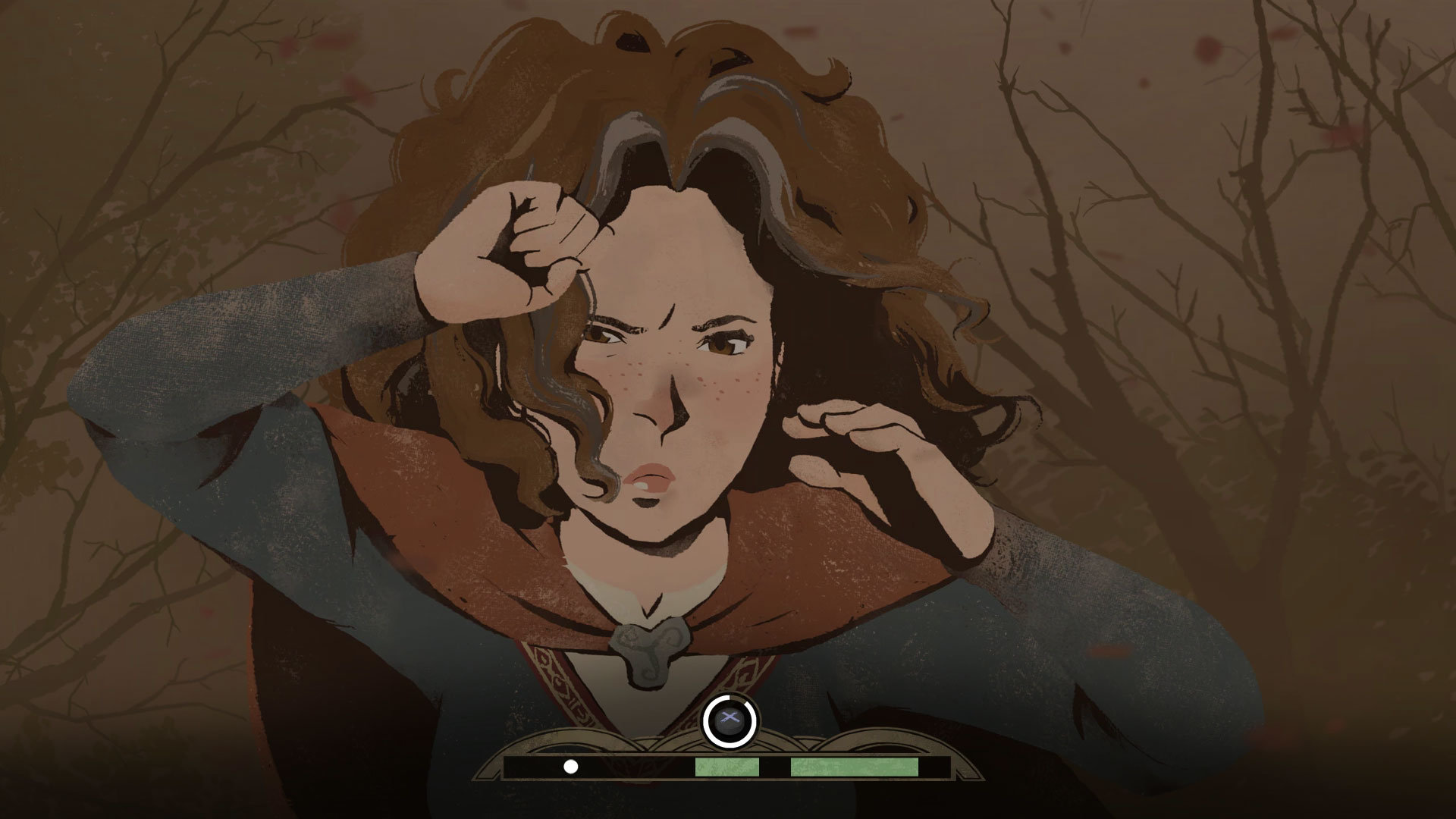 Fig 1. A typical real-time mini game used within The Pillars of the Earth.
Fig 1. A typical real-time mini game used within The Pillars of the Earth.
MUSIC
Ken Follett’s The Pillars of the Earth is my first experience hearing the music of Tilo Alpermann, having never played his previous video game projects; Silence or The Night of the Rabbit. Alpermann’s music is well suited to the environment both in the way that it matched the art style, and aesthetically in its musical style. The music doesn’t feel out of place for the settings or time period, and serves a role in helping the player get a real sense for the time the world is set in. It does this using a combination of orchestral instruments and folk instruments in sections for towns and battles, while using choirs for sections that are heavily religion inspired.
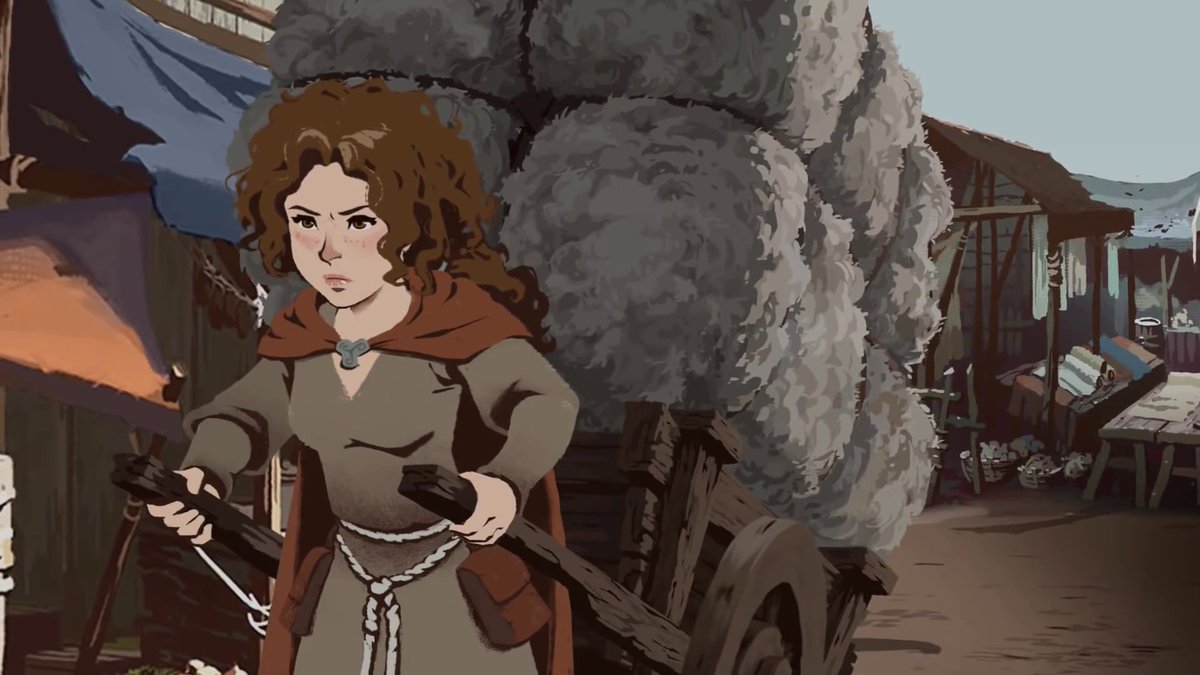 Fig 2. A look at the wonderful art style of the game, which inspires the musical aesthetic.
Fig 2. A look at the wonderful art style of the game, which inspires the musical aesthetic.
The music doesn’t do anything particularly interesting throughout the game in its implementation, but it does feature some short musical cues synced to dialogue to be triggered based on certain actions. An example of this is when the player tries to go to areas that they are blocked from, an ‘Aurd’ will threaten them and a short musical stinger will accompany this to support the context and ensure there isn’t any audio-visual dissonance (happy music to angry visuals). Bearing this in mind, I would say that the music in this game is definitely good and I would be willing to check out both Silence and The Night of the Rabbit just to hear the music.
Sound Design
This game has a lot of room to play with when it comes to creating a sense of realism within the game world. Whereas some fantasy games aspire for hyperbolic sound design – often to highlight the fantasy aspect of the game – the sound design in Ken Follett’s The Pillars of the Earth is realistic. It also comes with a good amount of variation in the environment sounds and for Foley, which is important based on how much time you spend walking around the environments while you figure out where to go next within the narrative. At first in each section this can be important as the level design and character names can be confusing, leading to some back tracking, but the sound design never caused any issues for me.
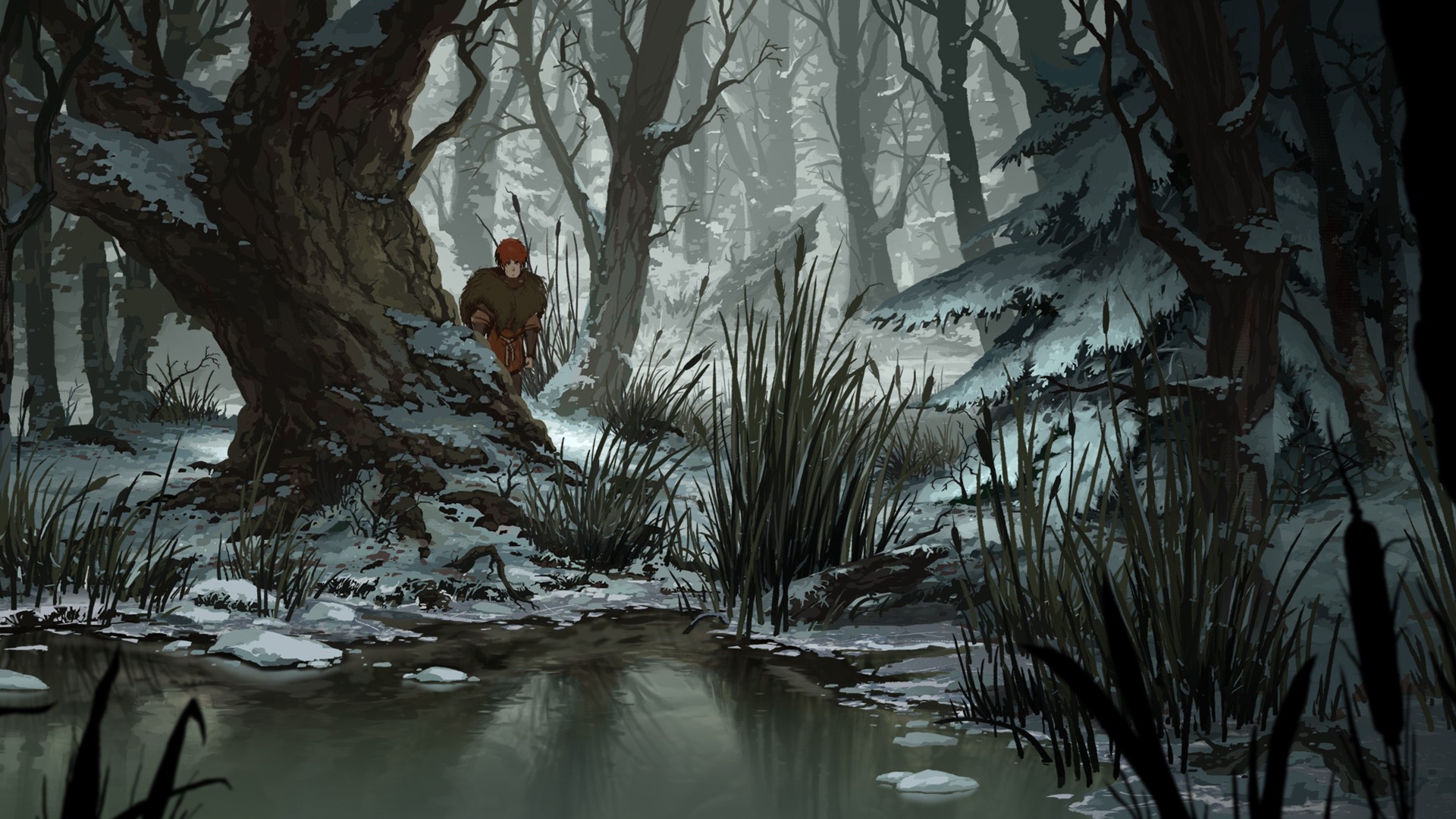 Fig 3. The type of rich and detailed environments used in the game, that are equally designed sonically.
Fig 3. The type of rich and detailed environments used in the game, that are equally designed sonically.
The sound design in this game while understated in a lot of ways, focuses on a supportive role within the soundscape that matches the reality of the game perfectly. The sound design highlights player actions, adds reality to the environments, and creates a simple bed over which the music and dialogue can perform their roles uninterrupted.
The only issue I really noticed regarding sound design and music is the transitions between loops of music and sounds between areas, generally as transitions when the player changes location, can be somewhat jarring.
Voice Acting
The voice acting in this title is high quality, with a lot of believable accents that you would expect to hear in the 12th Century English setting. Ken Follett even plays a role himself, showing some interest in authenticity of voices. Being the writer of the books, he would have some ideas in this aspect! Most of the voices within the game were handled by members of the London-based Voice Squad, featuring Chris Nelson, Amy McAllister, Terence Wilton, Laurence Kennedy and David Rintoul.
Generally the dialogue in the game is well acted, featuring a variety of accents with a wide range of believable emotions. The quality of the dialogue within this game is of such a high standard that it makes the game more engrossing for the player by absorbing them into it. The mix for the voice acting compared to buy ambien zolpidem the music and sound design was also good and didn’t need adjusting during gameplay. The mix also didn’t vary much when changing from gameplay to cut scenes, showing attention to detail within the mixing.
The dialogue did feature a couple of small issues, namely a few moments where the voice did not match the mouth movements, and also a few situations where you can choose answers to questions and there was a delayed or early response. Both can be a little distracting at times but come more from the implementation of the dialogue, as opposed to the voice acting itself.
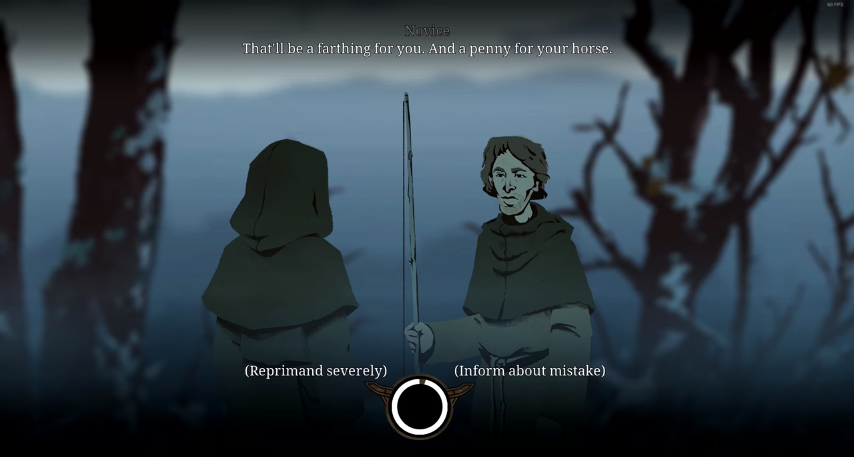 Fig 4. An example of the branching dialogue system used within the game.
Fig 4. An example of the branching dialogue system used within the game.
Lastly, non-playable character dialogue during mini games is quite repetitive, particularly when you are trying to do something multiple times to trigger trophies. I experienced this in Volume One when trying to teach Martha to use a Slingshot. She would repeat the same one or two lines no matter how many times I was forced to redo the mini game. This kind of issue does seem to have been addressed a little more in Volume Two as it was less noticeable this time.
Overall
The audio in Ken Follett’s The Pillars of the Earth Volume Two is much the same as Volume One, in that it is of a high quality and creates an engrossing story regardless of how simple the gameplay itself is. Overall, I would mainly recommend this game to fans of the books or fans of point-and-click adventure games. This recommendation comes from how the game is an enjoyable interactive story, but for gamers who are more action-orientated in their tastes, they might struggle to become engrossed if they don’t give it a couple of hours to get into the story. The music is well composed, the voice acting is believable and enjoyable, and the soundscape is realistically implemented and designed. If 12th Century England interests you, definitely pick up this game today!
LINKS
Official
We hope you enjoyed Kyle’s review, check out others in our Reviews section. Don’t forget to sign up to our Monthly Newsletter to make sure you don’t miss out on our reviews and interviews.
We’re also running a Patreon campaign to make sure we can keep bringing you regular, high quality content if you’re feeling generous! Thanks for even sharing!
The Sound Architect



